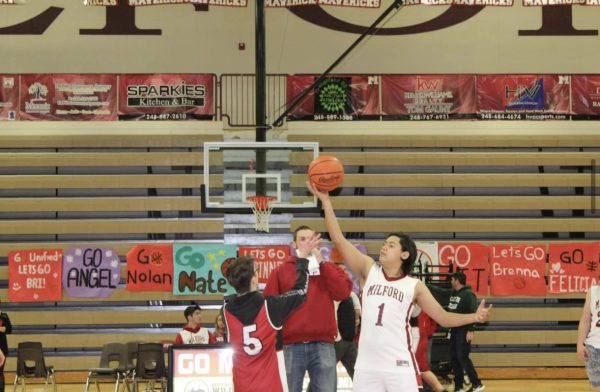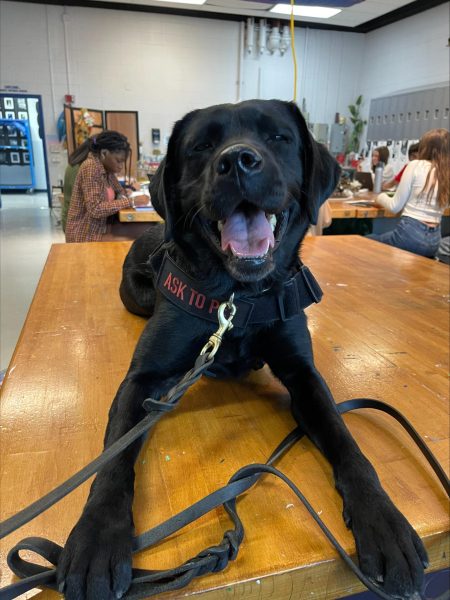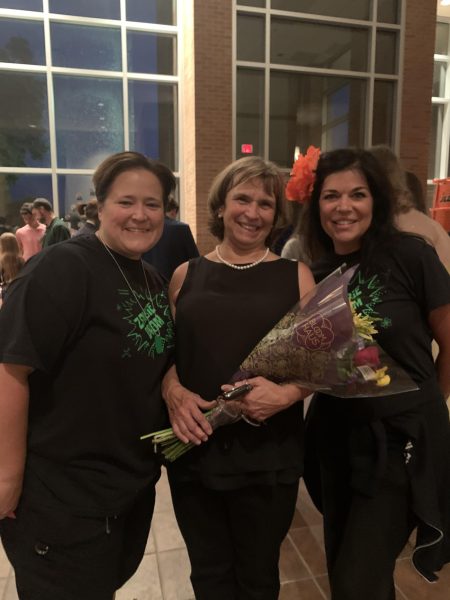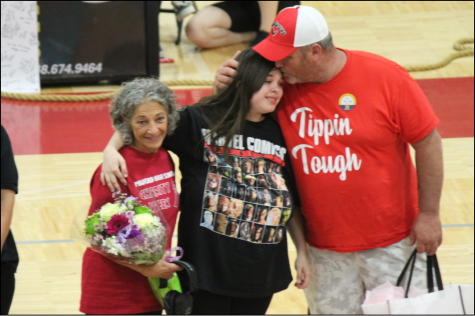Human trafficking is the second largest illegal trade
May 22, 2019
At a time when our country is so divisive, it is important to find issues we as a nation can agree on. Regardless of political beliefs, race, gender, or sexuality, sex trafficking is a problem that affects all of us and needs to be addressed.
Trafficking isn’t just happening behind closed doors outside our borders; trafficking is everywhere, the United States included. As of 2018, Michigan was ranked seventh in the country for human trafficking cases reported, and according to hopeagainsttrafficking.org, the top cities in the state receiving calls are Detroit, Grand Rapids, Ann Arbor, Kalamazoo, Lansing, and perhaps most surprising Mackinac Island. In 2017, there were 962 calls regarding trafficking in Michigan according to humantraffickinghotline.org
With college right around the corner for seniors, it is important to recognize that the top cities for sex trafficking are Michigan’s major college cities. People need to be aware, not so they’re scared to walk around at night, but so that they recognize potential risks and can identify what may be a trafficking situation. Back in 2015, only four years ago, a 14-year-old girl was brought to and stowed away in an apartment on Michigan State’s campus.
This girl met a man online, got into his car, and after being driven less than a half an hour away from her home, had inappropriate photos of her taken. She was offered for sex on more than one website, as common as Craigslist, then she was raped and driven home. The man who was responsible for taking the girl and the rape was charged and is serving jail time until at least 2022 but the MSU student was not charged and continues to live a normal life (Lansing State Journal).
The number of cases in Michigan has continued to increase since 2012, according to traffickingresourcecenter.org with one in three children “solicited for sex within forty eight of running away or becoming homeless in the US” (unicefusa.org). More recently, “the FBI in Detroit came across two ‘very active prostitutes’” who ended up being a 13 and a 15-year-old girl who weren’t arrested but rather “recovered” (Lansing State Journal). The truth that people simply have no clue about is that the biggest reason these people even need recovering is the foster care system.
“Half of all human trafficking victims are underage and Foster Focus Magazine states that 80 percent of these minors are children in the foster care system” (humantraffickingsearch.org). These people are at such a risk because once they go missing, no one goes looking. With the ages desired for trafficking ranging from 12-20 years old, these older foster children, who become less and less desired by families as they age, are either running away or aging out of the system… and into the streets where they become trafficked.
“Children in the foster care system are especially vulnerable since many have physical violence, substance abuse, and parental incarceration… Recruiters pose as boyfriends or protectors to gain the trust of young girls” and use “familial terms” to create a sense of belonging for those who long for it (humantraffickingsearch.org).
Children in the foster care system are not the only people at risk; 20 percent of people being trafficked are not from the system, so who else is being trafficked? People like those who have been in or aged out the foster care system, with financial vulnerabilities or poor security are at risk, as well as those who are politically unstable, like immigrants.
Gender plays a huge role into trafficking as more than 70 percent of victims are women. Addictions, mental health, gang involvement, and discrimination are all factors too, meaning that besides women, people of the LGBTQ community are also vulnerable (www.ctdatacollaborative.org). “Experts say just as there’s no community immune from crime, there’s no demographic––age, race, gender, religion, economic class––not at risk of being victimized. Vulnerability is the uniting characteristic” (Lansing State Journal).
A common belief is that people who are being trafficked were abducted, and while that is true with some cases, only 3 percent of people trafficked were kidnapped.
Often times, we hear more about the cases where people have gone missing simply because those are the stories that catch the attention of the media. Nobody wants to cover a story about a 19-year-old woman who aged out of the foster care system without a place to go and wound up in a brothel looking for a family, but that is the story that needs to be told.
The average life expectancy after being trafficked is seven years––meaning if a child is trafficked at the age of 12, she or he should expect to be dead before their twenties. Traffickers are giving children “quotas” of 10 to 15 buyers per night, and after “two years of constant prostitution, most are either too sick or injured from brutality to be of any use and are just left on the streets” and because children’s immune systems are not developed at the age they are being trafficked, they are acquiring diseases like AIDS, syphilis, and Hepatitis B,” which, of course, lowers the life expectancy even more (humantraffickingsearch.org).
The people picking up or finding these children and young adults are NOT just creepy older men. In fact, 42 percent of recruiters are women and often times, recruiters are not strangers, but close friends and family, most commonly romantic partners (www.sabre.com).
Each situation differs, but it is not unheard of for girls who are already trafficked to convince their friends to meet them at a hotel or a mall or a bar, and actually be setting up a trap to save themselves.
With the intricate inner workings of human trafficking in the US and outside our borders, it has quickly become one of the largest criminal industries, second ONLY to drug trade. According to sabre.com, the trafficking world globally is valued at $31.6 billion
What we need to do as community members is stay safe, watch out, and wra

A visual of the amount of money that trafficking is producing in the world
p our arms around those who need it. We need to be the ones to give a child without a family a sense of security and erase any stigma tied to victims of trafficking.
Educate yourself on what trafficking looks like where you live; if someone seems to be living in poor conditions with a large dependence on their employer, if you can’t speak to the individual alone, if they are submissive or fearful with signs of physical abuse they may be a victim to trafficking and unable to get out by themselves.
Organizations like Project Rescue or Project Polaris are serving particularly to help stop trafficking and so many other groups are working to spread awareness and fight back like UNICEF that is not only working against trafficking but other global issues.
Each of these organizations have their own websites with specific information about how to educate yourself and others and things to look for. Please call either the National Human Trafficking Hotline at (888) 373-7888 or call Michigan’s hotline at 855-444-3911 if you suspect someone is a victim or at risk of becoming one.









